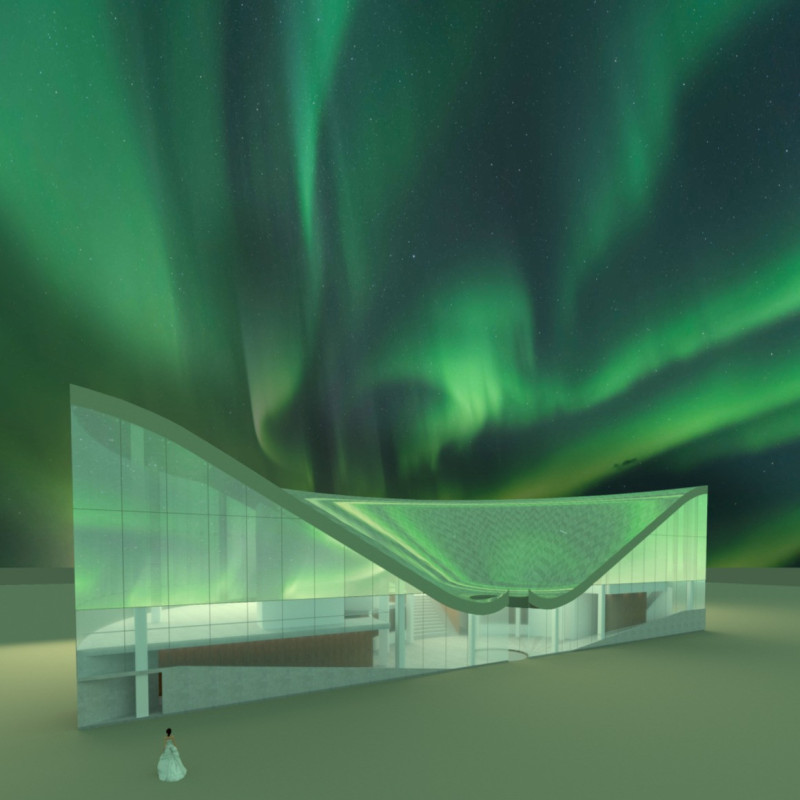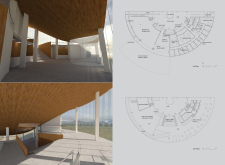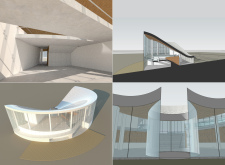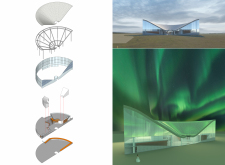5 key facts about this project
The museum's design reflects its function as a space for exhibitions, performances, and educational programming. Its architectural approach prioritizes accessibility and openness, allowing visitors to experience both the interiors and the breathtaking views of the surrounding landscape. The building's layout facilitates the flow of movement, guiding visitors through varied exhibition areas and communal spaces.
Innovative Use of Materials
One of the notable aspects of this project is its material selection. The façade predominantly employs glass, enabling natural light to enter while creating a visual connection between the interior and exterior environments. The glass also reflects the changing skies, enhancing the building's presence within its landscape. Supporting this transparent façade is polished stainless steel used for flooring, which mirrors the glacial surroundings. The incorporation of stone cladding on the walls and the use of softwood for interiors further establish a harmonious blend of natural elements and modern construction techniques.
Unique Design Approaches
The design of "The Language of Nordic Nature" showcases a unique integration of curvilinear forms inspired by geothermal and volcanic activity typical to Iceland. The roof's wave-like structure not only serves aesthetic purposes but also signals sustainable design, optimizing rainwater runoff and minimizing energy consumption. This project emphasizes seasonal and climatic responsiveness, with large windows facilitating passive solar heating in winter and strategically placed overhangs preventing excessive heat gain during summer.
Architectural planning includes multipurpose spaces designed for flexibility and adaptability, accommodating various events and exhibitions. The interior organization encourages movement and exploration, reflecting the natural flow of landscapes, while the outdoor exhibition areas promote interaction with the surrounding environment.
For further details on the architectural plans, sections, and designs of "The Language of Nordic Nature," readers are encouraged to explore the project presentation. Understanding the architectural ideas and intentionality behind this project provides valuable insights into contemporary practices that merge cultural expression with environmental awareness.


























